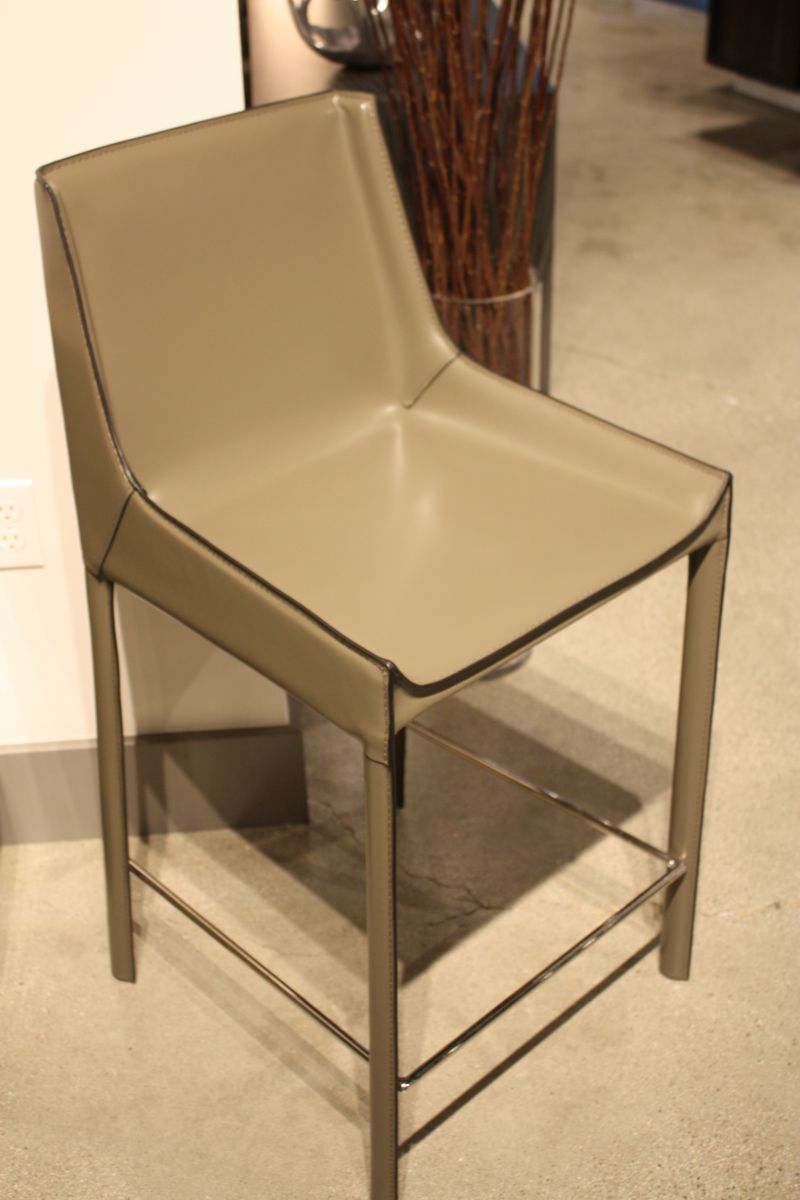Faux leather is just what it sounds like: fake, artificial, or synthetic leather. It’s made using mostly chemicals. In most cases, a plastic layer is bonded to a polyester fabric base.

Different types of plastic are used in fake leather production and the specific type determines whether it has any eco-friendly qualities.
Faux leather is the term commonly used with regard to its application for furniture upholstery, including for a chair, headboard, loveseat or sofa — even for sectionals.

However, this material also goes by other names as well, such as leatherette, vegan leather and eco-leather to name a few.
Newer types made from plant waste are also considered fake leather and go by a variety of names.
Reasons to Use Faux Leathers

Price
Faux leather upholstery often has a significantly lower price than real genuine leather. This is because it is manufactured using synthetic compounds.
The material is made in large sheets and the pieces are versatile and easy to cut. For genuine leather sofas and chairs, cutting the pieces needed has to work within the size limits of the hide used.

Personal Preference
Obviously, faux leathers are not real leather and are not animal byproducts.
People who choose to follow a vegan lifestyle will often opt for alternative materials like these to avoid animal skin — real leather.

Different Types Of Faux Leather Material
There are different kinds of faux leather materials, but two primary types. The first of the two types is polyurethane, often called “PU Leather.” The second is vinyl, which is polyvinyl chloride or PVC.
1. PU Leather
PU-based synthetic materials are preferable to the PVC types. This is because they are less dangerous and have a little more breathability than PVC-based materials. Manufacturers are updating their production to cut down on hazardous toxins. That said, PU faux leather is still based on fossil fuels.
2. PVC Leather
Polyvinyl chloride material is less commonly used than it was during the 1960s and 70s. That said, some vegan leather materials still use it. Items made with PVC-based materials are hard to clean and are not breathable.
Moreover, PVC releases dioxins, which are polluting compounds. Manufacturing also adds plasticizers such as toxic phthalates to make it supple. Greenpeace calls it the “single most environmentally damaging type of plastic.”
Technology is Yielding More Alternatives
New technologies are producing new kinds of alternative materials that resemble real leather. These are as versatile as the more toxic fossil-fuel-based materials
While they are still not real leather, they do mimic some of the qualities. Moreover, as a whole, they are more environmentally friendly than fossil-fuel-based materials like PU and PVC.
New alternatives to real leather include those made from mushroom fibers, fruit waste, plastic waste, pineapple fibers and other organic materials.
Variety
Because faux leather is a manufactured material, upholstery can be made in many chic colors, styles, textures, and patterns, just like genuine leather. This is useful when working with a specific and/or tight color palette or design scheme, for example, a specific leather sofa or loveseat style.
In fact, the style options available are wide because fake leathers are cheaper to make.

Low Maintenance
Typically, fake leather upholstery is very easy to clean by simply wiping it with a damp cloth. There are no pores to soak up stains, which keeps things cleaner as a whole.
Faux leather upholstery also fades less than real leather does.
Reasons to Avoid Faux Leather

Ages Gracelessly
Genuine leather upholstery ages beautifully to a marvousl patina. Imperfections that come with age and wear only enhance the soft, luxe, expensive luster and feel of real leather.
Faux leather does not have the ability to age like real leather. In fact, a faux leather sofa will never look better than it does in its brand-new state.
Also, fake leather sofa materials are not as durable and will peel and split, as will bonded leather.

Not Breathable
In addition to having less durability, faux leather is not breathable. Of course, certain types breathe even less than others. If this is a concern, avoid PVC based-materials at all costs. This is because they are the least forgiving in the breathability department.

Not Environmentally Friendly
Real leather is more environmentally friendly than artificial leather because it is a natural byproduct of cows used for beef.
In other words, faux leather is an entirely new material that is manufactured. This is the opposite of genuine leather, which is the upcycled hide of the cow. If it were not turned into leather, it go to waste, heading for a landfill or incinerator.
Importantly, these most popular types of faux leather are made using fossil fuels. The petroleum-based products are not environmentally friendly and like most plastics are not biodegradable.

High(er) Puncture Factor
Synthetic leather upholstery materials lack the natural elasticity or structural forgiveness that real leather has. This means that faux leather can be punctured or torn more easily than real animal hide.
Fake leather also has a tendency to tear at the seams, which real leather does not.

Non-Hypoallergenic
Real leather possesses hypoallergenic traits, which is beneficial. Artificial leather lacks any such qualities, making it a material more prone to be allergen-inducing. It can also release a synthetic or petroleum smell or even toxic compounds.


